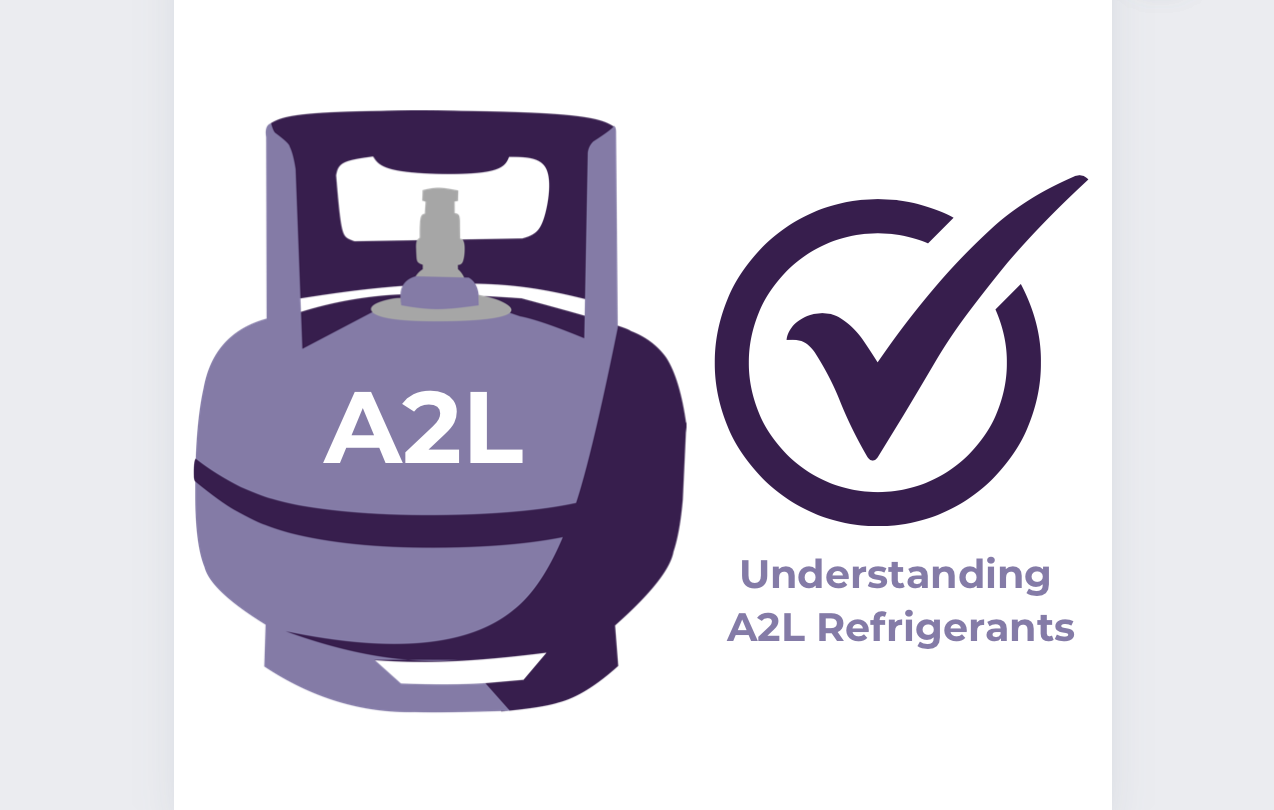Choosing the Right Technology for A2L Gas Sensing in Air Conditioning and Refrigeration

As HVAC and refrigerant manufacturers transition their portfolios to low GWP A2L refrigerants to comply with various global regulations, one issue that must be addressed is safety.
A2L refrigerants such as R-32, R-454a, R-454b, and others offer significantly lower emissions than the current generation of HFC refrigerants. But they also bring increased safety concerns. While the flammability of these refrigerants is classified as low, UL and IEC safety standards mandate the use of refrigerant detection systems or leak detection sensors for equipment using A2L refrigerants installed in occupied spaces.
Comparing A2L Gas Sensor Technologies
A variety of technologies can be used to detect A2L refrigerant gases, but many fail to meet key requirements for A2L gas sensors as identified by the Air Conditioning, Heating, and Refrigeration Technology Institute (AHRTI), and these limitations can affect reliability and performance.
One example is thermal conductivity. This technology meets basic requirements for A2L gas sensing in terms of response time and exposure resistance but failed to meet AHRTI requirements for performance at low temperatures. What’s more, the lifespan based on IEC and UL/CSA LL7 has not been verified and there is no end-of-life indication, which can compromise safety if the sensor fails.
Speed of sound measurement, non-disruptive infrared sensors, and metal oxide semiconductors have also been applied to A2L gas sensing, but these technologies suffer similar limitations as thermal conductivity. Measurement is negatively affected by low temperatures and there is no end-of-life indication. These technologies can also be vulnerable to poisoning when exposed to harsh environmental conditions (85° C and 85% relative humidity) and oil spray testing. In addition, some technologies have not performed well in vibration testing.
The Sensience A2L gas sensor uses micromachine membrane technology that incorporates patented Molecular Property Spectrometers (MPS) from our partner NevadaNano. This approach to A2L gas sensing, which is exclusive to Sensience, has resulted in the only A2L gas sensor that meets all AHRTI requirements. Our A2L gas sensor was also the first in the industry to achieve UL certification (UL 60335-2-40, 4th edition standard).
How Sensience A2L Gas Sensors Work
The Sensience A2L gas sensor integrates a micro-machine membrane transducer with an embedded joule heater and resistance thermometer. The transducer continually samples the air to determine if a gas is present that matches the molecular properties of the refrigerant of interest.
If a gas is detected, the joule heater rapidly heats the gas, and an environmental sensor measures real-time environmental conditions. The energy required to heat the gas is then measured by the resistance thermometer and the gas concentration level is precisely calculated by patented algorithms that account for temperature, humidity, and pressure. The response time is less than 20 seconds and measurements can be output in digital or analog form. False alarms are virtually eliminated due to the sensor’s accuracy and reliability.
The mechanically robust sensor module has a low thermal mass and is immune to poisoning. In testing, the Sensience A2L gas sensor has demonstrated reliability in conditions that poisoned other A2L gas sensors, including harsh environmental conditions and oil sprays. The sensor self-checks every 2 seconds to ensure all components are operating properly and will issue an alarm if any problems are detected. The module does not require field calibration and is designed to be maintenance-free over its long lifetime.
Our A2L gas sensor has an operating range from -40 C (-40°F) to 75° C (167° F) and from 0 to 100% relative humidity. It supports R-32, R454A, R454B, and R454C refrigerants.
Integrating Mitigation Into A2L Gas Sensing
The other factor that must be considered with A2L gas sensing is mitigation. More complex systems will be equipped to use outputs from the sensor to mitigate flammability risks. But with simpler systems, design engineers could have to source and integrate a separate mitigation board to trigger alarms or mitigation processes. That can double the cost of A2L gas detection and mitigation.
To simplify the development of HVAC and refrigeration systems that comply with UL and IEC standards, Sensience has developed an A2L gas sensor with an integrated mitigation board. This sensor delivers all of the capabilities and benefits of our micro machine membrane sensor described previously but is also capable of using the sensor output to trigger an alarm or turn on a mitigation fan. The integrated mitigation board is factory configurable to support flexible low flammability limit (LFL) thresholds, fan purge times, and minimum alarm times.
Your Source for A2L Gas Sensing
Our innovative approach to A2L gas sensing delivers the reliability and accuracy OEMs need to safely and cost-effectively transition to low GWP refrigerants. With flexible and custom mounting options and the availability of integrated mitigation, our A2L gas sensors are designed to remove barriers to low GWP refrigerants and simplify the design of systems using A2L refrigerants.
We have also invested in the manufacturing capacity to ensure we can support the rapid scalability of low GWP air conditioning and refrigeration systems and are recognized throughout the industry for manufacturing quality and customer support. For more information on our A2L gas sensing solutions, contact us.